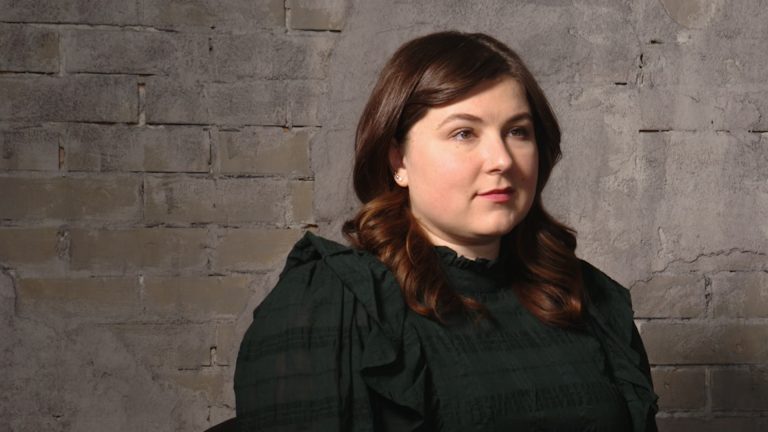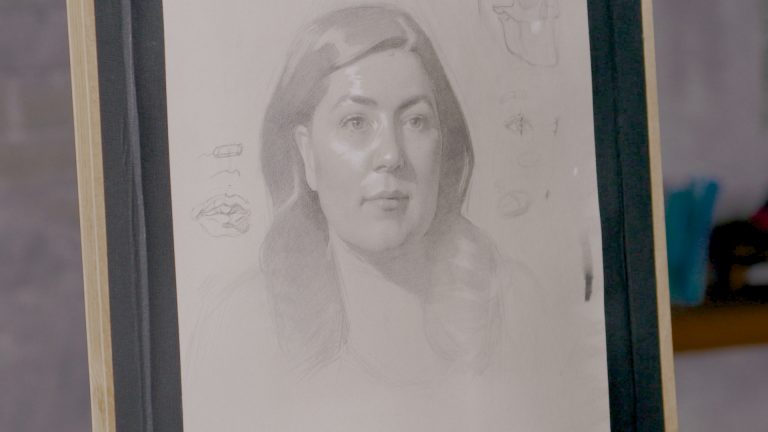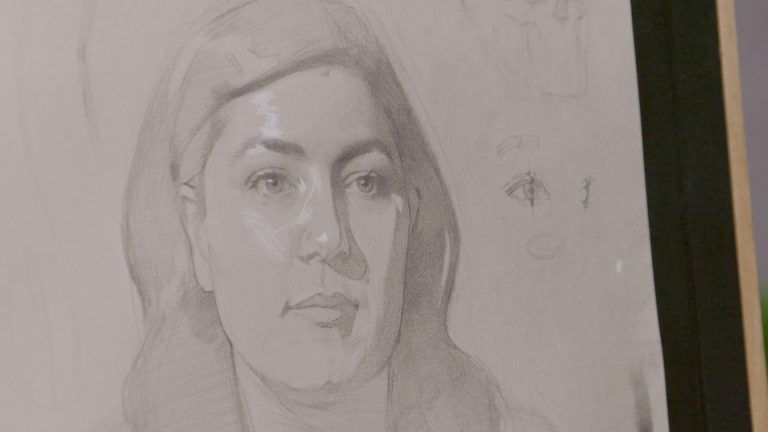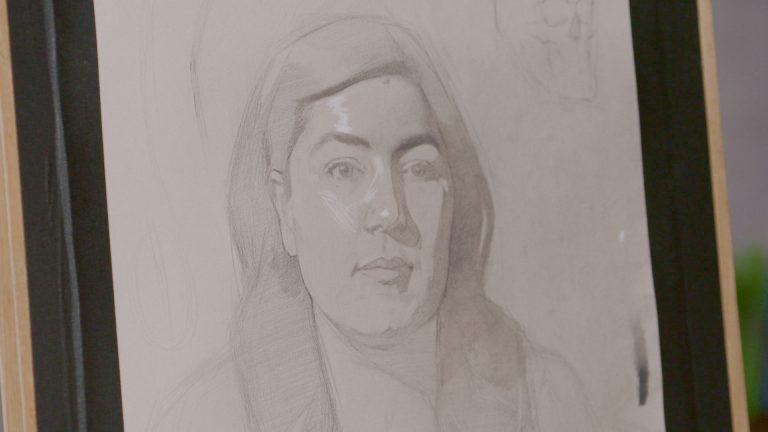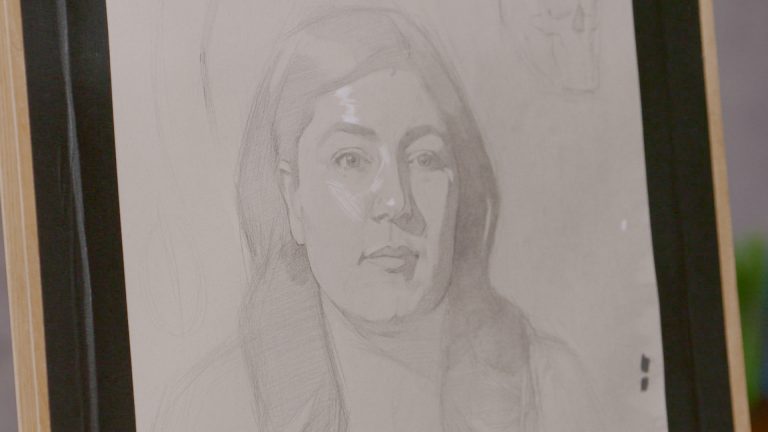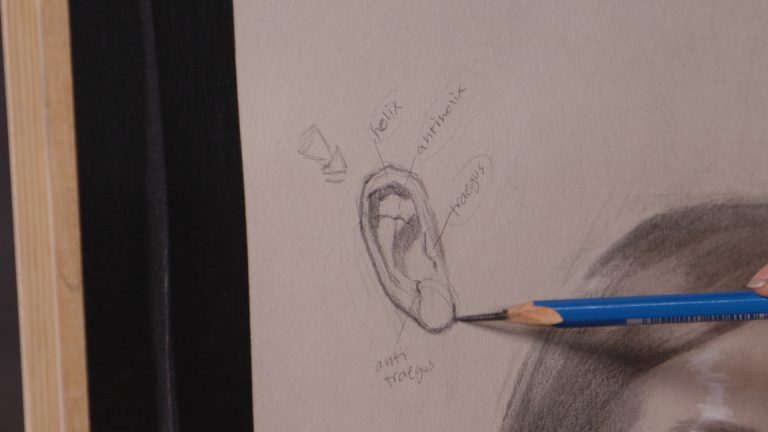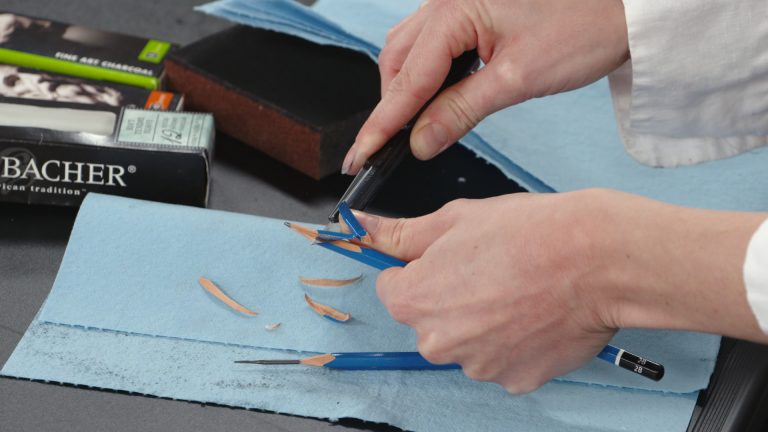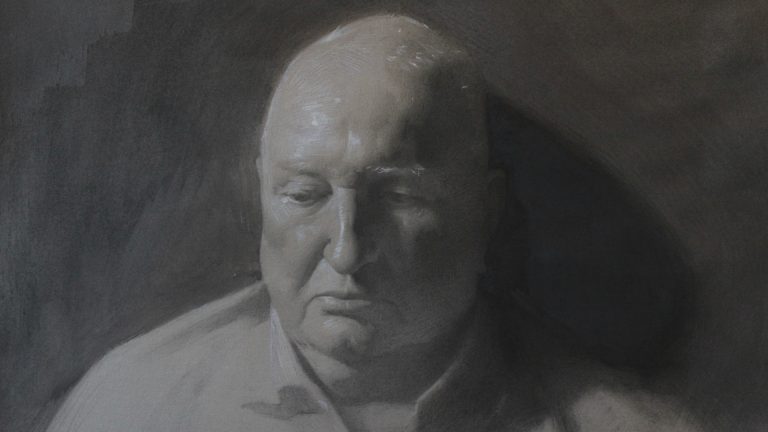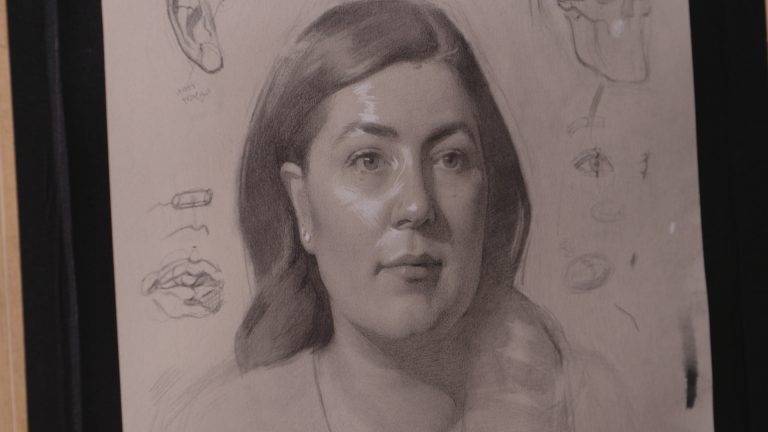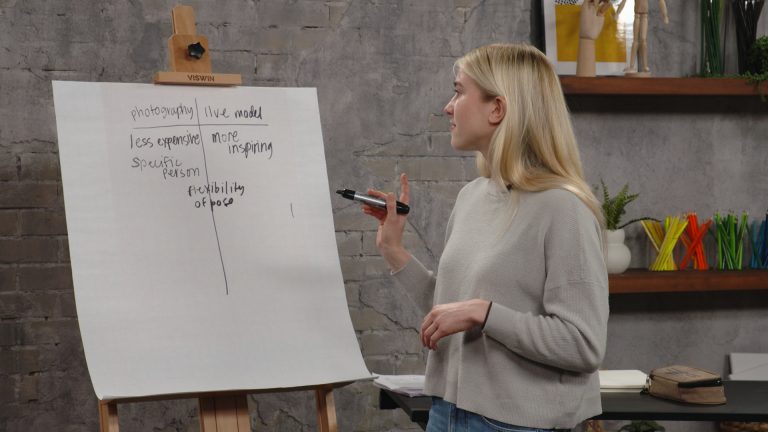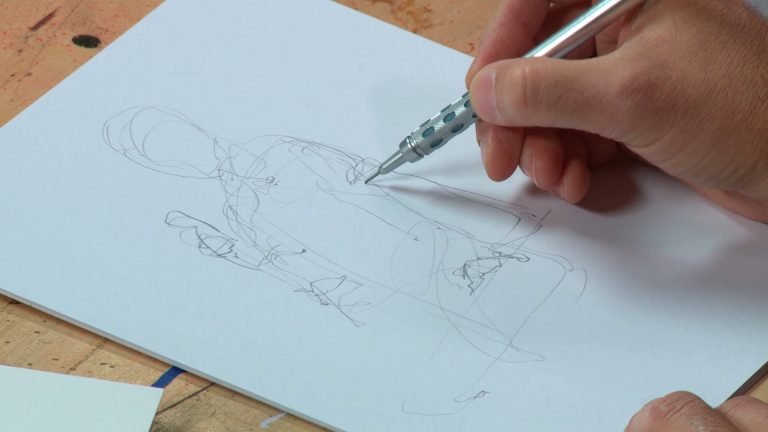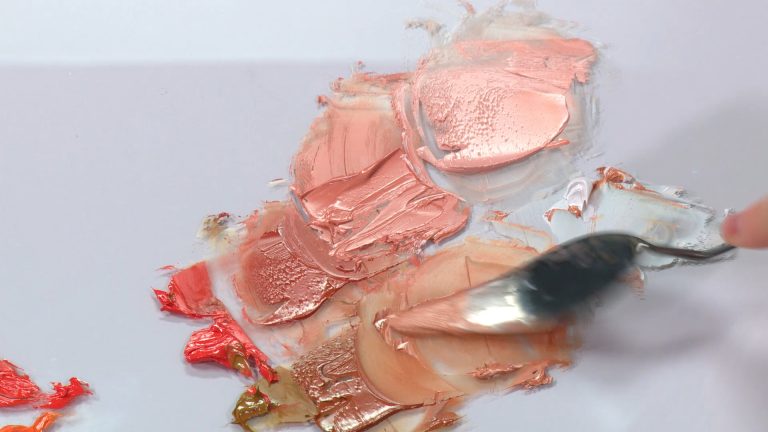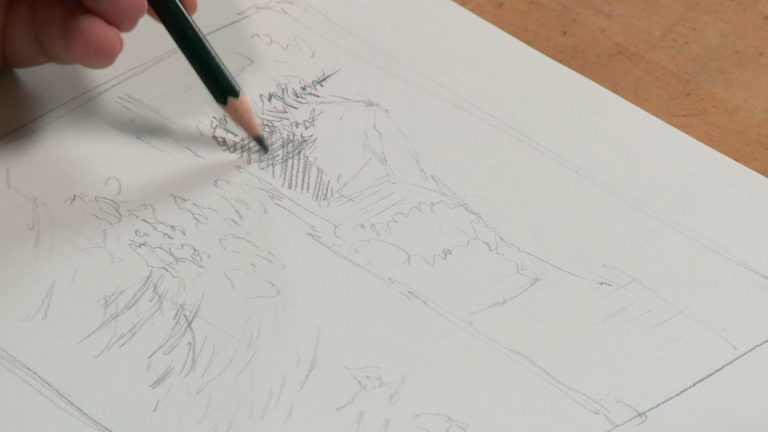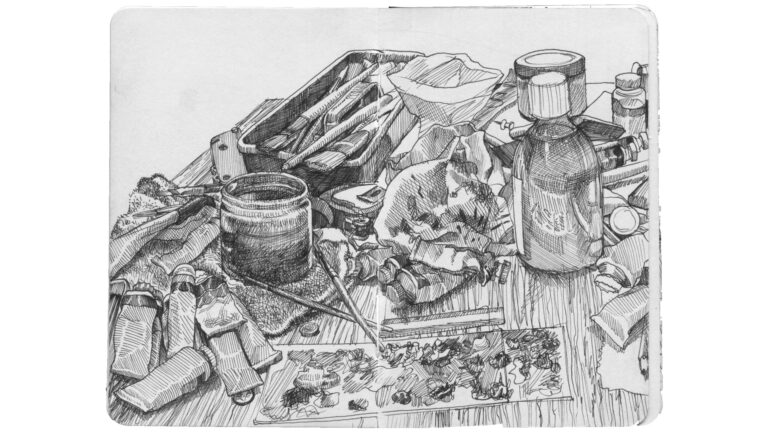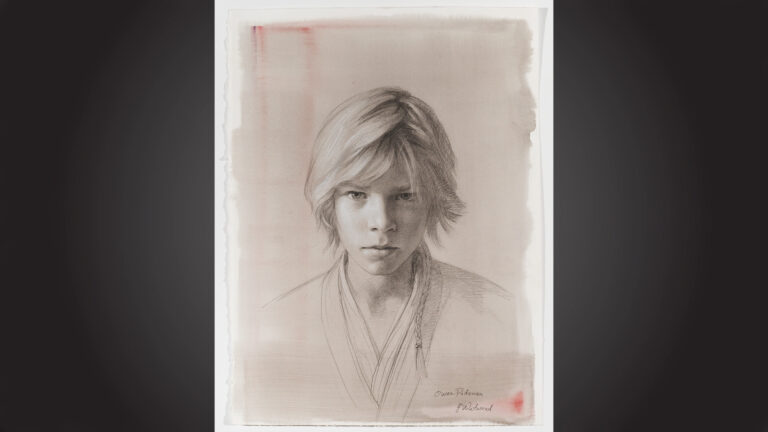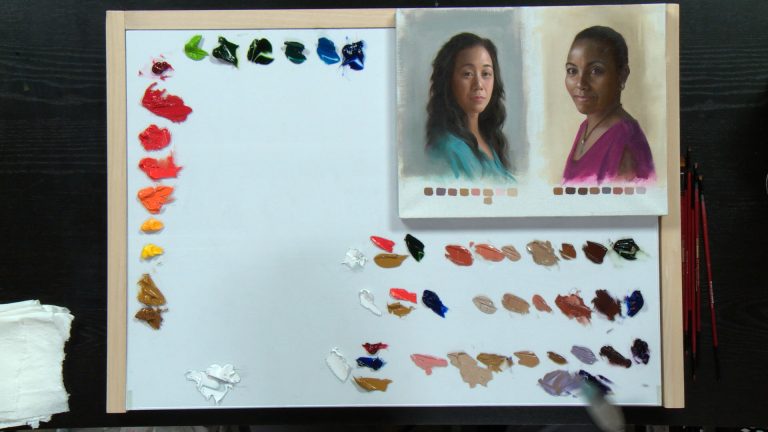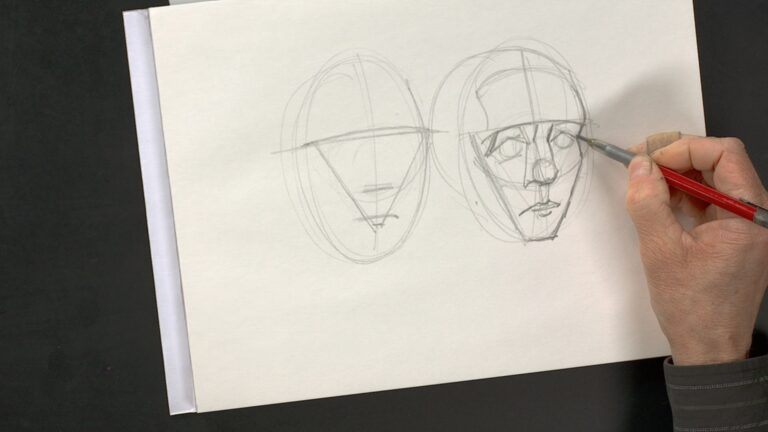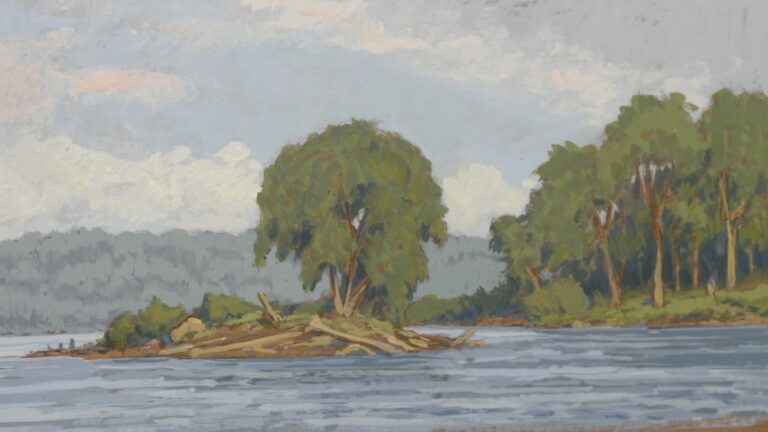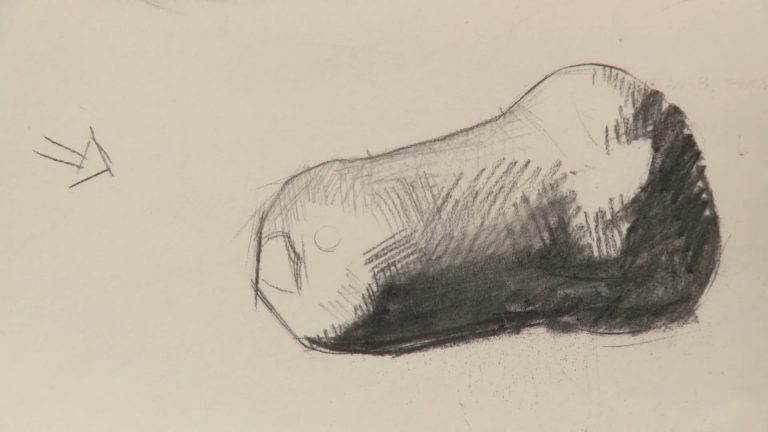
Setting Up a Model at Home
Savannah Tate CuffTransform any space into a life drawing studio with a model and a basic understanding of universal lighting principles. Artist Savannah Tate Cuff shows you how to adapt these principles to your space to light both your model and your drawing or painting surface. Consider your lighting and make decisions before you start to paint or draw for greatest success.
First, Savannah explains, always use a single light source when lighting your subject. This simplifies light and shadow for a stronger drawing. That single source can be natural light or artificial light. For centuries, artists have considered natural light—especially north-facing light—the gold standard, but it isn’t always available. If you do have north light, make the most of it! Savannah suggests putting tracing paper on the window for south or other directional light to keep it consistent.
Synthetic light, such as the LED panel on a light stand that Savannah uses in her studio, is the most consistent light, and easy to move around the model. Direct your lighting from the side so the model is half in light and half in shadow if you’re working in front of him or her. By directing the light from a three-quarters position, it’s possible to create what Savannah calls Rembrandt lighting, with a dramatic triangle of shadow on the model’s cheek. Or light the model from directly in front to create just a small shadow shape.
Finally, be sure to have enough light on your canvas or drawing surface as well. Maintain that single light source on the model, though, and don’t let the light on your paper interfere with it. Savannah explains how 19th century artists would set up two light sources with a curtain between them to maintain the integrity of the single light on each.
Explore videos by Savannah Tate Cuff
You may be interested in
Premium Membership
Unlock exclusive member content from our industry experts.
- 24/7 Access to Premium Visual Art Videos, Projects, and Tips
- Step-by-Step Instructional Demos, Guides, and Tutorials
- Access to Ask the Expert Program
Unlock exclusive member content from our industry experts.
- 24/7 Access to Premium Visual Art Videos, Projects, and Tips
- Step-by-Step Instructional Demos, Guides, and Tutorials
- 2 Full-Length Classes to Keep in Your Account for Life
- Access to Ask the Expert Program
Gold Membership
$340 Value
Get everything included in Premium plus exclusive Gold Membership benefits.
- 24/7 Access to Premium Visual Art Videos, Projects, and Tips
- Step-by-Step Instructional Demos, Guides, and Tutorials
- 4 Full-Length Classes to Keep in Your Account for Life
- 8 Downloadable Visual Art Guides
- Discounts on Purchase-to-Own Content in the Artist's Academy Shop
- Access to Ask the Expert Program
- Access to GOLD LIVE Streaming Events
